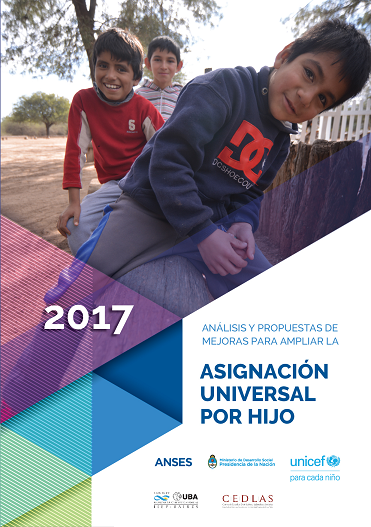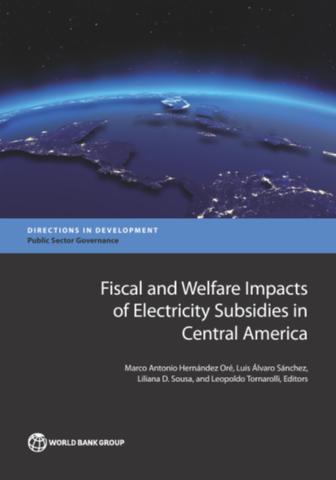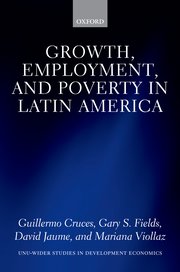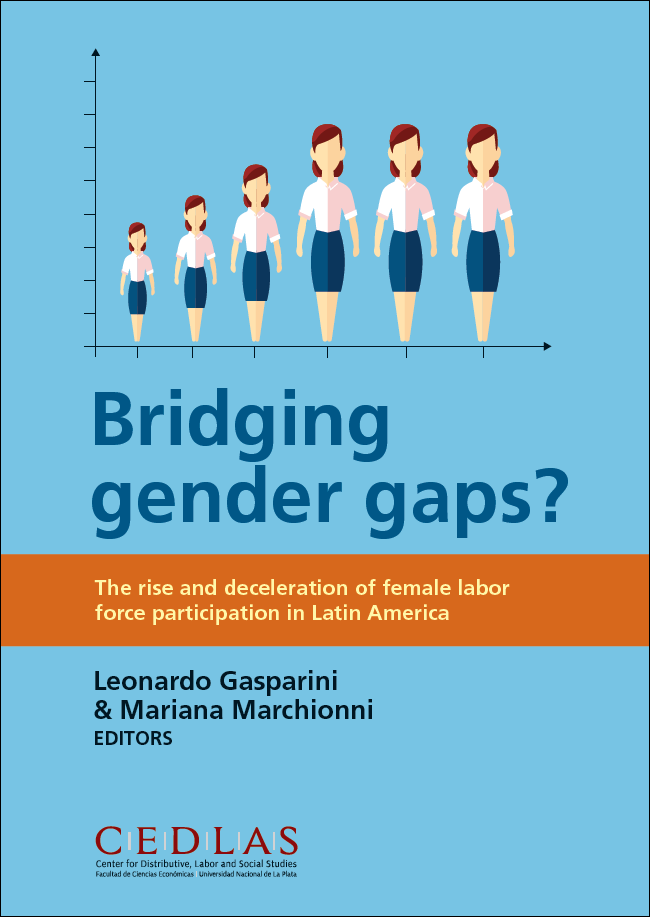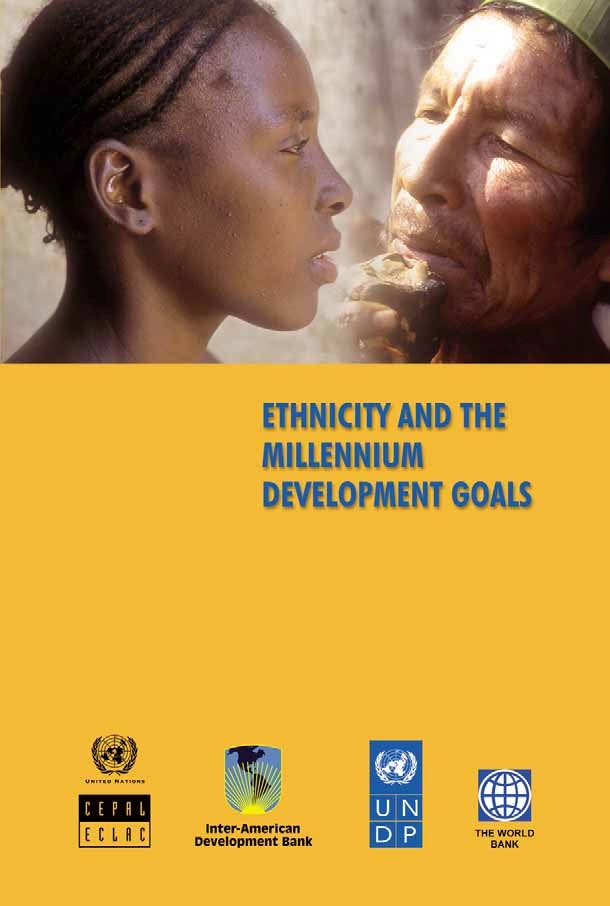
Desiguales: Una guía para pensar la desigualdad económica

Leonardo Gasparini
Participación laboral femenina: ¿Qué explica las brechas entre países?
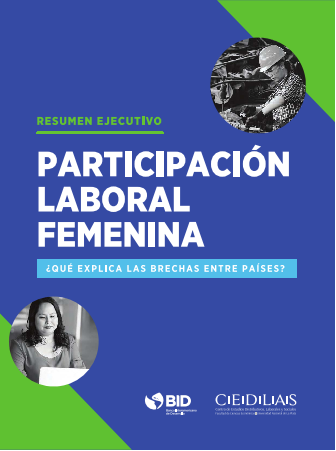
Mariana Marchionni, Pablo Gluzmann, Joaquín Serrano y Monserrat Bustelo
Brechas de género en América Latina. Un estado de situación
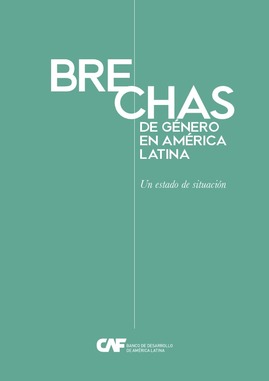
Mariana Marchionni, Leonardo Gasparini y María Edo
ANÁLISIS Y PROPUESTAS DE MEJORAS PARA AMPLIAR LA ASIGNACIÓN UNIVERSAL POR HIJO
The program AUH, is one of the pillars of Argentine social policy. It’s aimed at the most vulnerable children and adolescents.
This study on AUH is the result of an interdisciplinary work carried out by researchers from CEDLAS and IIEP BAIRES-UBA CONICET with the support of UNICEF, ANSES and the Ministerio de Desarrollo Social.
Fiscal and Welfare Impacts of Electricity Subsidies in Central America
Hernández Oré, Marco Antonio; Sánchez, Luis Álvaro; Sousa, Liliana D.; Tornarolli, Leopoldo.
Central American countries spend approximately one percent of their aggregate gross domestic product subsidizing residential electricity consumption. This amount is comparable with what these countries spend on education and social assistance. The pressure that electricity subsidies exert on government budgets is particularly high when international energy prices rise. Electricity subsidies also provide perverse incentives for the overconsumption of electricity as households do not pay the true cost of their consumption, which in turn reduces incentives to increase energy efficiency. This book answers key questions regarding residential electricity subsidies in Central America. In particular: How do the subsidy mechanisms function in each country? What are their fiscal costs? Are these subsidies good value for the money? How efficient are subsidies in reaching households in need, and what drives this efficiency? What are the reform options?
- Download Book

- Cite: “Hernández Oré, Marco Antonio; Sánchez, Luis Álvaro; Sousa, Liliana D.; Tornarolli, Leopoldo. 2017. Fiscal and Welfare Impacts of Electricity Subsidies in Central America. Directions in Development—Public Sector Governance;. Washington, DC: World Bank. © World Bank. https://openknowledge.worldbank.org/handle/10986/28504 License: CC BY 3.0 IGO.”
Growth, Employment, and Poverty in Latin America
Guillermo Cruces, Gary Fields, David Jaume & Mariana Viollaz
This book examines the links between economic growth, changing employment conditions, and the reduction of poverty in Latin America in the 2000s. Our contribution is an in-depth study of the multi-pronged growth-employment- poverty nexus based on a large number of labor market indicators (twelve employment and earnings indicators and four poverty and inequality indicators) for a large number of Latin American countries (sixteen of them). We present an exhaustive analysis of the growth-employment- poverty nexus which directly relates changes in all labor market indicators to economic growth, and changes in all employment and earnings indicators to changes in poverty. We also base our analysis on a broader set of labor market indicators than those used in other studies.
Bridging gender gaps? The rise and deceleration of female labor force participation in Latin America
Leonardo Gasparini y Mariana Marchionni (eds)
The book “Bridging gender gaps? The rise and deceleration of female labor force participation in Latin America” shows that since the early 2000s women’s entry into labor markets in Latin America has shown signs of widespread and significant deceleration.
While female labor participation rose rapidly over the 1990s, the rate of increase fell to one-third in the following decade, and even stopped in some countries.
- What caused this deceleration?
- What are its implications?
- Who has been most affected?
Pobreza y Desigualdad en América Latina Conceptos, Herramientas y Aplicaciones
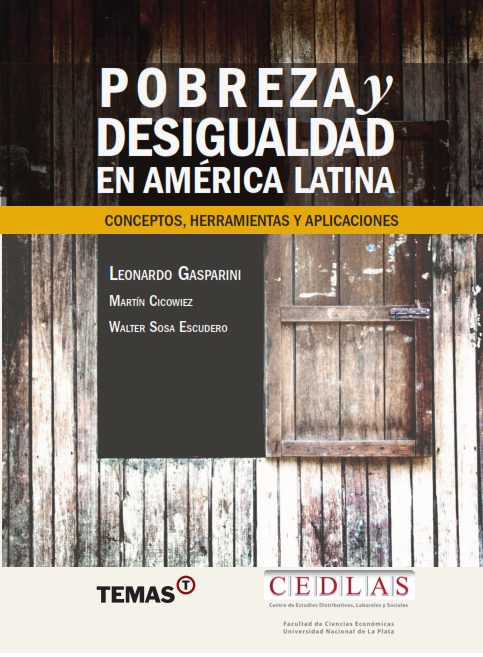
Leonardo Gasparini, Martín Cicowiez y Walter Sosa Escudero
Poverty and inequality are central social problems in Latin America. This book develops the main conceptual discussions on these issues, provides a comprehensive set of analytical tools, applies them to specific household survey data, and provides evidence for all Latin American countries.
The volume, written by three well-known researchers on distributive issues, provides the reader with a set of analytical instruments necessary to be seriously involved in empirical research on poverty and inequality, in order to contribute to the ultimate objectives of explaining and improving the social reality of the region.
The book is only available in Spanish
Los programas sociales en Argentina hacia el Bicentenario
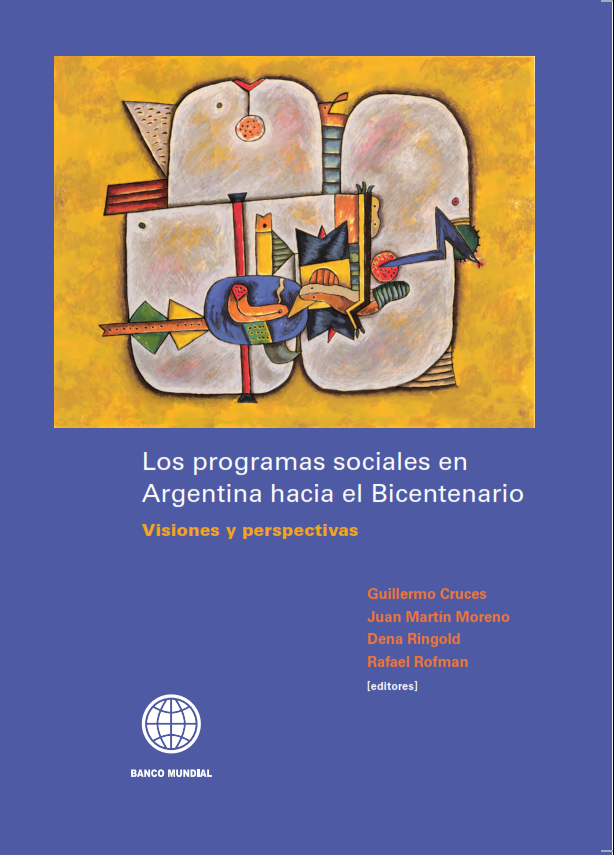
Guillermo Cruces, Juan Martín Moreno, Dena Ringold, & Rafael Rofman (eds)
During the twentieth century, social protection was structured according to formal employment, through the instruments of social restraint, long-standing and relatively high coverage in the Latin American context. In contrast, social programs, defined as transfers of income tax for the relief of poverty in the general population are a relatively new form of social policy in Argentina, since they were developed primarily in response to the crisis of 2001-2002. In this context, this book seeks to contribute to the discussion on the design and implementation of a system of integrated and sustainable social protection. The book is divided into two parts. The first part focuses on core results of the project, Income Policy in Argentina by the World Bank and in two of its main studies: a survey of opinion on social programs, the Survey of Perceived Social Plans, (EPPS) and a process of consultation with relevant actors in the process of formulating and implementation of social policies. The second part of this book presents a series of papers written by experts in social policy and public opinion. This work was motivated by the results of the EPPS and the discussion generated from that project and its context.
The book is only available in Spanish
Polarización económica, instituciones y conflicto. Dinámicas de la cohesión social latinoamericana
Leonardo Gasparini, Matías Horenstein, Ezequiel Molina, and Sergio Olivieri
This book presents a set of statistics that characterize the degree of income polarization in Latin America and the Caribbean (LAC). The study is based on a dataset of household surveys from 21 LAC countries in the period 1989–2004. Latin America is characterized by a high level of income polarization. On average, income polarization mildly increased in the region in the period under analysis. The paper suggests that institutions and conflict interact in different ways with the various characteristics of the income distribution. In particular, countries with high income polarization and inequality are more likely to have high levels of social conflict.
Uqbar editores, Colección Cieplan Santiago. ISBN 978-956-8601-19-5
Brechas urbano-rurales y Objetivos de Desarrollo del Milenio en América Latina y el Caribe
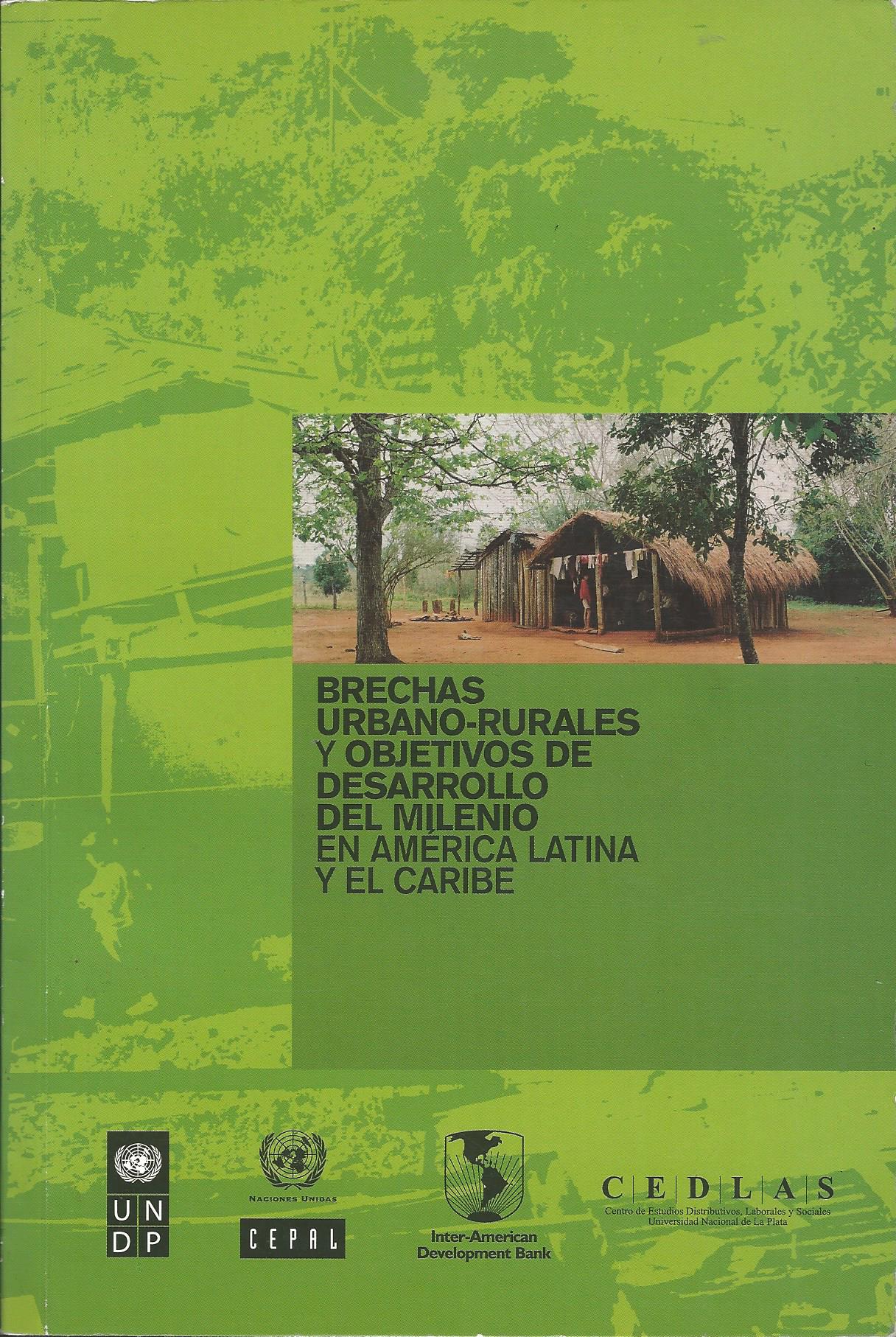
Martín Cicowiez, Leonardo Gasparini, Federico Gutiérrez, and Leopoldo Tornarolli
Periodic evaluation of the MDGs in the region and within each of their countries is essential for proper coordination of efforts in the international community. The comparison between countries allow us to identify those nations lagging behind in terms of development and analyze their characteristics, investigating possible causes of their relative delay. Within each country, monitoring of the MDGs highlights the areas that present the greatest shortcomings, providing a diagnosis for the design of policies and for a proper allocation of public resources.
This paper analyzes, based on the information available in household surveys, the current situation of the countries of Latin America and the Caribbean, recent developments and future prospects in light of the MDGs, focusing on the contrast between the rural and urban areas.
2008. United Nations (UNDP), CEPAL, and IADB.
Tables and summaries per chapter
Chapter 1: General Aspects
Chapter 1 shows statistics to compare the overall situation in terms of the MDGs in Latin America with respect to other developing regions. Then, there are statistics on the size and evolution of the rural population in the countries of the region. Finally, we introduce the data used in the study, and discuss the precise definition of rural used.
Chapter 2: Socio-economic characterization
This chapter provides a socio-economic characterization of rural and urban areas of Latin America and the Caribbean, which will allow us a better assessment of the MDGs.
Chapter 3: Reduction of Poverty (MDG 1)
This chapter presents evidence on the relationship between poverty and geography to the 17 Latin American and Caribbean countries included in the sample. It compares the situation of urban and rural populations in terms of poverty and living conditions.
Chapter 4 Educational improvements (MDG 2)
This chapter examines the progress achieved in the educational aspect in the countries of Latin America and the Caribbean. When this is possible, the proposed indicators are computed on the MDGs.
Chapter 5: Gender Equality (MDG 3)
the first part of this chapter focuses attention on the gender gap in educational achievement, comparing the situation in urban and rural areas. The second part of the chapter explores the gender disparities in the labor market
Chapter 6: Reduction of Poverty in Rural Areas
The first MDG posits that countries must reduce by half the proportion of poor in the period from 1990 to 2015. In this chapter we perform micro-simulations in order to analyze the effects on rural poverty in simple counterfactual scenarios.
Chapter 7: Characterization of the Rural-Urban Differences in Poverty and Education
Two stylized facts emerge clearly from the previous chapters. On the one hand, rural poverty in Latin America and the Caribbean is higher than urban poverty. Moreover, the rural population has, on average, lower levels of formal education than their urban counterparts. In this chapter microeconometric decompositions are performed that aim to characterize these differences.
Ethnicity and the Millennium Development Goals
Matías Busso, Martín Cicowiez, and Leonardo Gasparini
Today the MDGs are far from being satisfied in Latin America and the Caribbean. The emphasis in this study is placed on ethnicity. In particular, we analyze the situation of indigenous and afro-descendent groups vis-à-vis euro-descendent and mestizo individuals using microdata from household surveys from fifteen LAC countries. The paper mainly focuses on the analysis of the three first MDGs: (1) Halving extreme poverty and hunger; (2) Achieving universal primary education; and (3) Promoting gender equality. Our sample includes fifteen LAC countries: Bolivia, Brazil, Chile, Colombia, Costa Rica, Ecuador, Guatemala, Haiti, Honduras, Mexico, Nicaragua, Panama, Paraguay, Peru, and Suriname.
2005. United Nations, CEPAL, IADB and The World Bank, ISBN: 958-97596-2-9.
Tables and summaries per chapter
Chapter 1: Ethnicity and the Millennium Development Goals in Latin America and the Caribbean
In Chapter 1 we propose an operational definition that allows us to identify ethnic groups in LAC household surveys. We also present a description of some important socio-economic characteristics (location, household type and labor market variables) of indigenous and afro-descendent people.
Chapter 2: Poverty Reduction (MDG 1)
This chapter provides descriptive evidence about the relation between ethnicity and poverty. We analyze the situation of indigenous and afro-descendent people in terms of poverty and living conditions in fifteen LAC countries. In almost every country non-white groups have higher poverty rates than white groups, according to all poverty lines. For instance, the median ratio of non-white poverty to white poverty is 2.2 when using 1 dollar-a-day, and 1.8 when using 2 dollars-a-day. Differences in other indicators of living conditions are also significant.
Chapter 3 Improving Educational Outcomes (MDG 2)
In Chapter 3 we first analyze educational outcomes from several perspectives always stressing the analysis of differences by ethnicity. We compute literacy rates, enrollment rates for different age-groups and educational levels and what is know as “school gaps”. We come to two important conclusions. First, we find that for children in primary school age, differences by ethnicity in all these outcomes are not quantitatively important. That been said, however, it is also true that in some countries differences do exist and should be addressed. Secondly, we find that differences by ethnicity in educational outcomes do exist for individuals in secondary school and college age.
Chapter 4 Increasing Gender Equity (MDG 3)
Chapter 4 asses the Millennium Development Goal 3 that refers to the elimination of gender disparity in all levels of education no later than 2015. Latin America and the Caribbean is one of the regions in the world where the usual indicators of education show a relatively high gender equity and this holds when analyzing the sample by ethnicity. However, there are some exceptions worth noticing.
Chapter 5: Achieving MDG Number One for Non-Whites
In Chapter 5 we use a simple microsimulation technique to estimate the effect at the national level of achieving the MDGs for the indigenous and afro-descendant populations in the Latin American and the Caribbean countries in our sample. To that end, we simulate the implementation of a transfer program that allows the indigenous and afro-descendent people to leave poverty behind. The reduction in the poverty incidence at the national level varies widely between countries, ranging from 27 percentage points in the case of Haiti (from 51% to 24%) to 0.07 percentage points for Chile (from 3.53% to 3.46%). As expected national poverty reduction is higher for those countries with a larger non-white population (i.e. Haiti, Bolivia, Guatemala, Paraguay, and Brazil).
Chapter 6 Explaining Differences Between Whites and Non-Whites: Microeconometric Decompositions
A countless number of factors may explain the differences in poverty rates between whites and non-whites. In the first part of Chapter 6 we concentrate in six of them: i) returns to education; ii) the gender wage gap; iii) returns to experience; iv) the dispersion in the endowment of unobservable factors; v) hours of work; and vi) the education of the active population. We estimate the sign and the relative magnitude of the effects of these factors for explaining differences in poverty incidence between whites and non-whites. The indigenous and afro-descendant active populations tend to be less educated than their white counterparts. These differences have a negative effect in non-whites’ poverty incidence for eleven countries. In the second part of Chapter 6 we implement a microeconometric decomposition of differences in the rates of school attendance by ethnicity/race for three education levels: primary; secondary; and tertiary. We find that the differences in the individual characteristics of the children in age of attending primary school explains a large part of the difference between rates of school attendance for whites and non-whites in all countries. This conclusion applies to the three educational levels.
Chapter 7: Policies to Meet the MDGs
In Chapter 7 we revise different policies to address the specific problems that indigenous and afro-descendent populations suffer.
La Distribución del Ingreso en la Argentina. Perspectivas y Efectos sobre el Bienestar
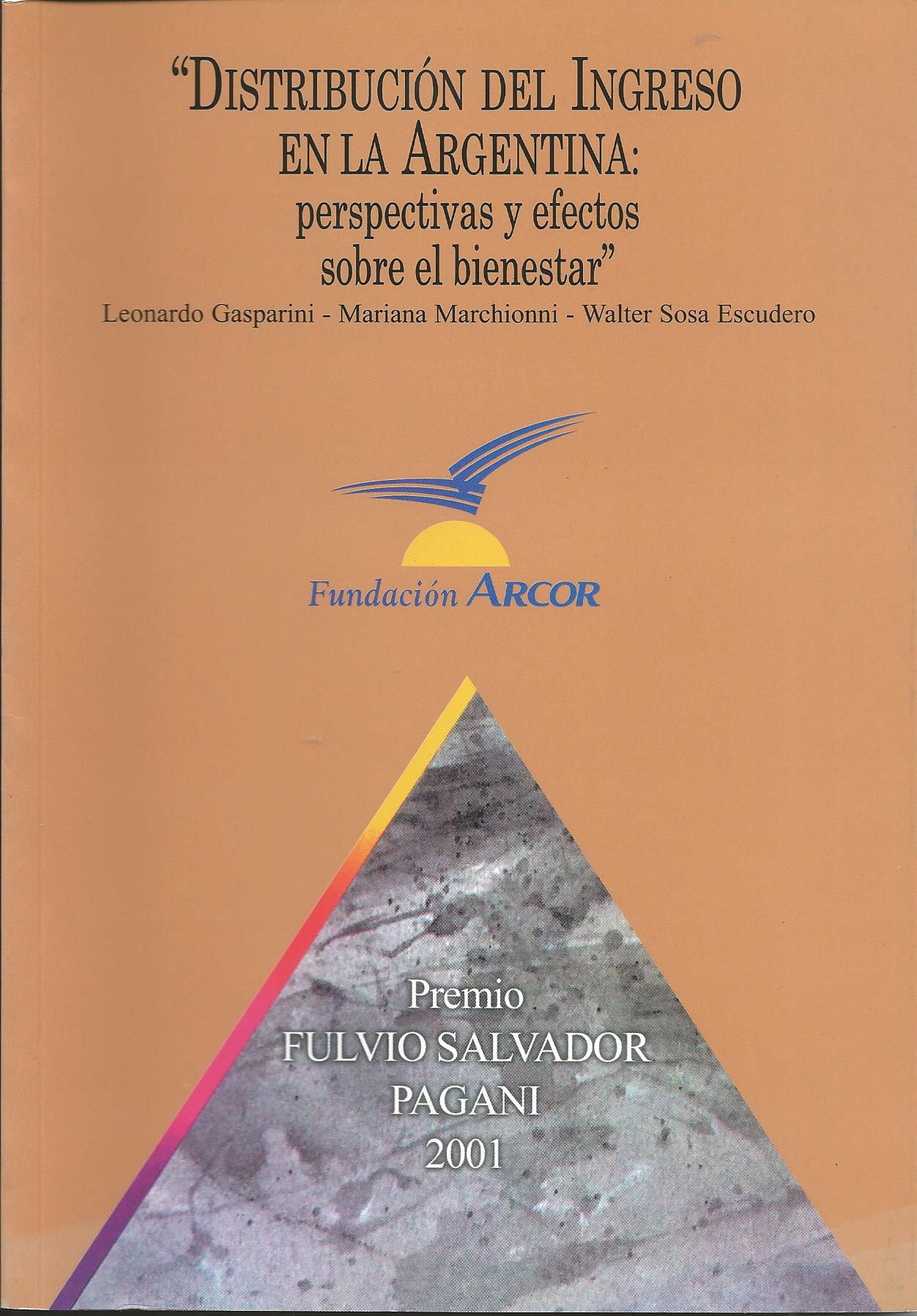
Leonardo Gasparini, Mariana Marchionni and Walter Sosa Escudero
This book presents a comprehensive – though not exhaustive – analysis of the problem of income distribution in Argentina. The study provides novel empirical evidence and systematizes existing literature on the subject. The development of the work is documented with an extensive list of references, which guide the interested reader to the literature that is considered more relevant. The work is an economic study of distributive issues directed to both economists and people not trained in economics.
Premio Fulvio Salvador Pagani 2001, Fundación Arcor. Editorial Triunfar. ISBN: 987-9449-89-4



